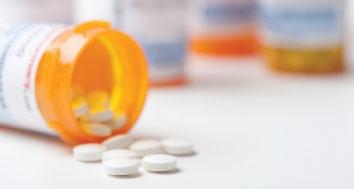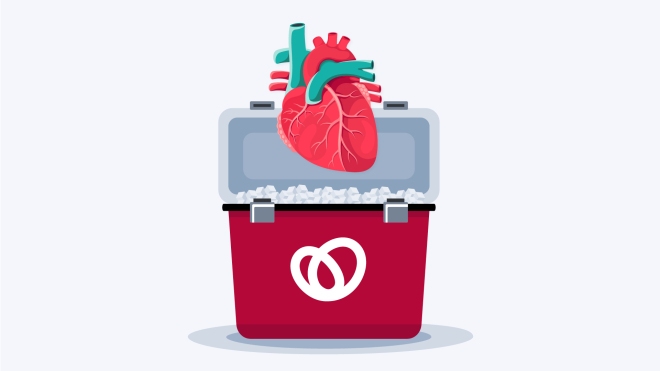
Since their first appearance in the late 1980s, the cholesterol-lowering drugs known as statins have become one of the most widely prescribed classes of drugs ever produced. The medication is used to treat coronary artery disease (atherosclerosis) by lowering the amount of LDL cholesterol—the “bad” cholesterol—in the bloodstream.
More than 2.5 million Canadians are taking a statin. In the United States, that number is close to 35 million. A recent update to the American Heart Association (AHA) prevention guidelines caused some controversy in the media and much discussion in medical circles for seeming to further broaden the scope of statin use.
The Beat spoke with Ruth McPherson, MD, PhD, about the benefits and risks of these very commonly used drugs following her presentation on this topic at the Ottawa Heart Support Group. Dr. McPherson is a key opinion leader in cholesterol management and risk reduction for heart disease and is an author of the Canadian Cardiovascular Society guidelines for this area of clinical practice. At the University of Ottawa Heart Institute, she holds a number of leadership positions, including Director of both the Lipid Clinic and the Ruddy Canadian Cardiovascular Genetics Centre.
The Beat: What do we know about the value of statins for treating individuals with heart disease?
Dr. McPherson: Statins are part of standard care for people with existing heart disease in order to reduce the risk of an additional cardiovascular event—a heart attack or stroke—or further procedures, such as a stent or bypass surgery. The benefits have been shown in a large number of studies. Statins markedly reduce the risk of having further heart problems or cardiac death. If you have blockages in your arteries, they reduce the risk of progression. Importantly, they provide great benefit in prolonging healthy life.
In Canada, we measure cholesterol levels in mmol/L. A reduction of 1 mmol/L in LDL results in a 20 to 25% reduction in cardiovascular events. Because the overall benefit with statin therapy depends on how much you lower LDL, we’re now aiming for lower levels than we used to.
The newer cholesterol-lowering drugs are highly effective and can lower LDL much more than the drugs of 15 years ago. The more you lower LDL, the better you do. There is also greater benefit the longer you take statins.
I’m often asked by patients whether we can actually reverse atherosclerosis. We are starting to see evidence that you can reverse it, slowly, if you can get LDL levels low enough. This is important because the plaque deposits that cause atherosclerosis can rupture, resulting in blockages. Even if you have had multiple stents or bypass surgery, that only addresses the urgent aspect of the disease. You are left with plaques in other arteries, and anything we can do to reduce the impact of that will reduce your future risk.
“The bottom line is that, for the vast majority of people, the benefits of statins far outweigh any increased risk.”
– Dr. Ruth McPherson, Director, Lipid Clinic, UOHI
The Beat: What about using statins to prevent heart disease in the first place?
Dr. McPherson: Statins for primary prevention—in individuals with no known heart disease—is beneficial, but the short-term benefit depends on the level of heart disease risk for a given individual. This has been in the press a lot lately because of the change to the AHA guidelines for who should be taking statins.
In fact, this has not been covered well in the media because these American guidelines are not very different from the Canadian ones. The AHA guidelines recommend statins for anyone who has a 10-year risk of dying from heart disease of above 8 to 10%. This is entirely appropriate.
There is a growing body of evidence that statins reduce heart attacks and the risk of dying for any reason in people with no known heart problems. And this is where a lot of the controversy has arisen: How and when do you treat someone with no history of heart disease?
Comments in the press have indicated that there is no benefit for statins in primary prevention because you don’t reduce total deaths. That is completely inaccurate. Studies have shown that there is, indeed, a benefit. A recent meta-analysis [looking across several earlier studies] published in the British Medical Journal clearly showed that treating people earlier and reducing LDL further provides a remarkable reduction in the risk of a cardiovascular event. They found that treating a 50-year-old to reduce LDL by 2.6 mmol/L or more reduced risk by about 90%.
The message from this study is that you should lower LDL as much as possible, using a tolerable dose of medication, and if you have risk factors such as diabetes or a family history of heart disease, you should start lowering LDL early.
The Beat: Looking at the other side of the coin, what about side effects and risks? Muscle aches are often mentioned.
Dr. McPherson: Yes, side effects are a valid concern, and there are several recognized side effects associated with statins. But serious side effects are very rare and are generally avoidable. Muscle problems can range from minor aches and stiffness to severe muscle pain and weakness. Full-blown rhabdomyolysis, where muscle tissue breaks down rapidly, occurs extremely rarely. In my 26 years of managing patients’ cholesterol levels, I have only had two cases of rhabdomyolysis.
Studies have shown that the occurrence of muscle pain isn’t greatly increased over people not taking statins. Mostly, when they do occur, these muscular side effects are a nuisance that can decrease quality of life and reduce adherence to the medication. The likelihood is greater in older patients, women and people of Asian descent.

Statins can trigger new cases of diabetes in a small number of people. We’re not yet sure why this happens. When it does occur, it’s usually in patients who are overweight. They tend to have high fasting blood sugar and are already moving toward becoming diabetic.
Statins can also elevate liver enzymes. We do follow liver enzymes in certain situations, but this side effect is very rare.
The bottom line is that, for the vast majority of people, the benefits of statins far outweigh any increased risk. And the benefits are not limited to heart health. Overall, statin users have about a twofold decrease in the risk of developing dementia. Does this mean statins are protective? Well, whatever we can do to improve vascular risk factors and maintain good blood flow can be expected to protect the brain from vascular dementia.
Also, there is currently a great deal of interest in statins in the cancer world because there is emerging evidence for a reduced risk of breast cancer and improved outcomes for women with inflammatory breast cancer—a particularly aggressive form. There may also be some benefit with prostate cancer.
The Beat: So, for patients who do experience muscle discomfort, what are the options?
Dr. McPherson: Muscle pain is the most common reason that people stop taking statins or reduce their dosage. We want to do everything we can to keep people properly on their medication because the benefits are dramatically reduced when statins are not taken as prescribed.
It’s the minor side effects that lead most people to avoid or stop taking a statin. Of course, these side effects may not seem minor to someone who wakes up with muscle cramps in the middle of the night. They are minor in terms of serious harm, but they can affect your quality of life.
In most cases, we can manage these side effects by adjusting the dose of a statin that a person is taking. Or we can switch to a different statin. This is the preferred approach to get the greatest reduction in LDL. We can also stagger the days when the statin is taken, such as three times per week, alternate days or even once a week, although this can reduce effectiveness. Or we can reduce the statin dose more significantly and combine it with another cholesterol-lowering medication.
Only about 2% of people are unable to take a statin due to side effects. This is a small but real portion of the population. For these individuals, other drugs are available. These include some older cholesterol-lowering medications that are generally less effective. A new group of agents called PCSK9 inhibitors is on the horizon and should be available in two to five years. This treatment can reduce LDL as much or more than statins, generally without side effects, but must be administered by injection by the patient every two weeks.




